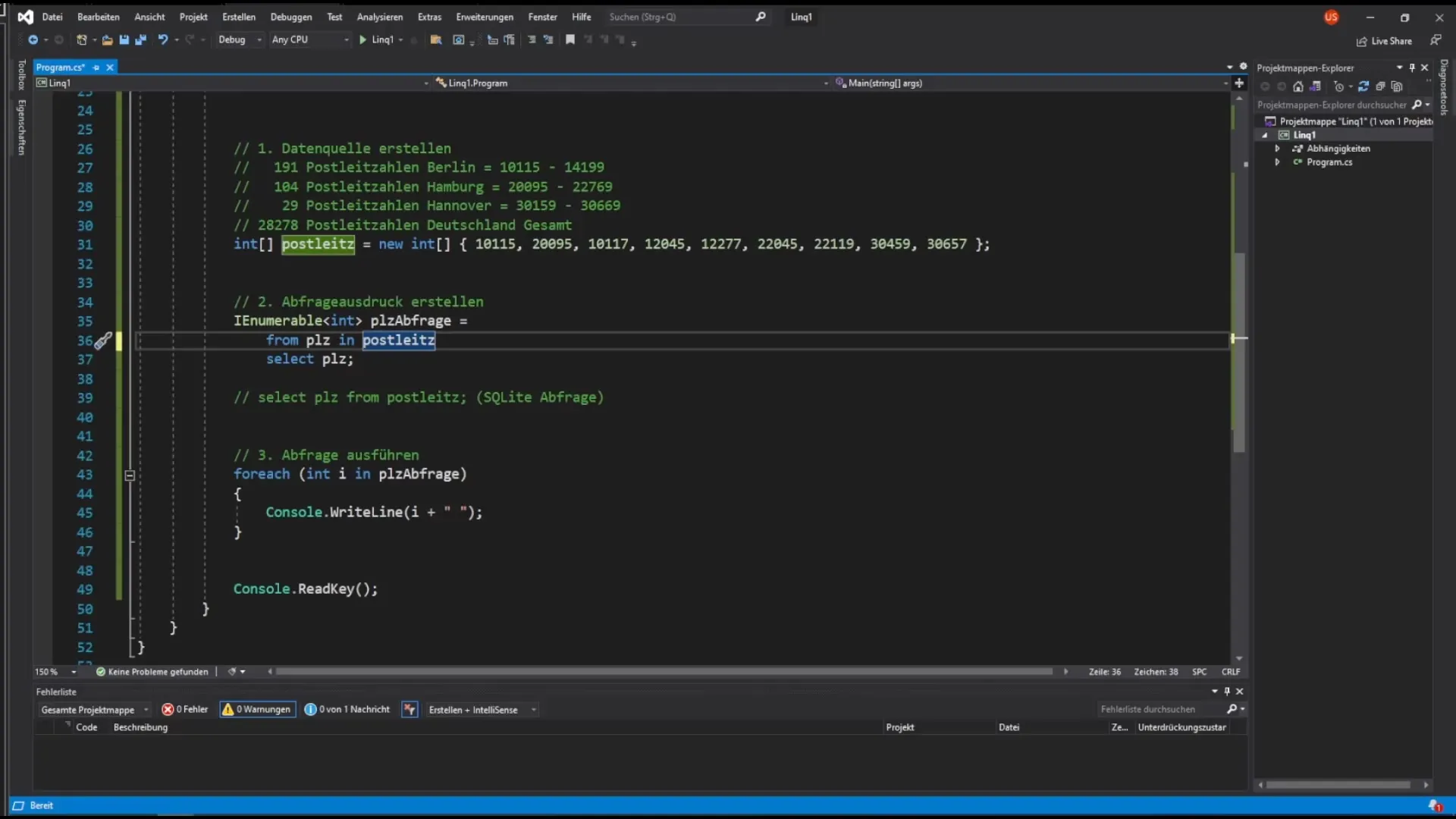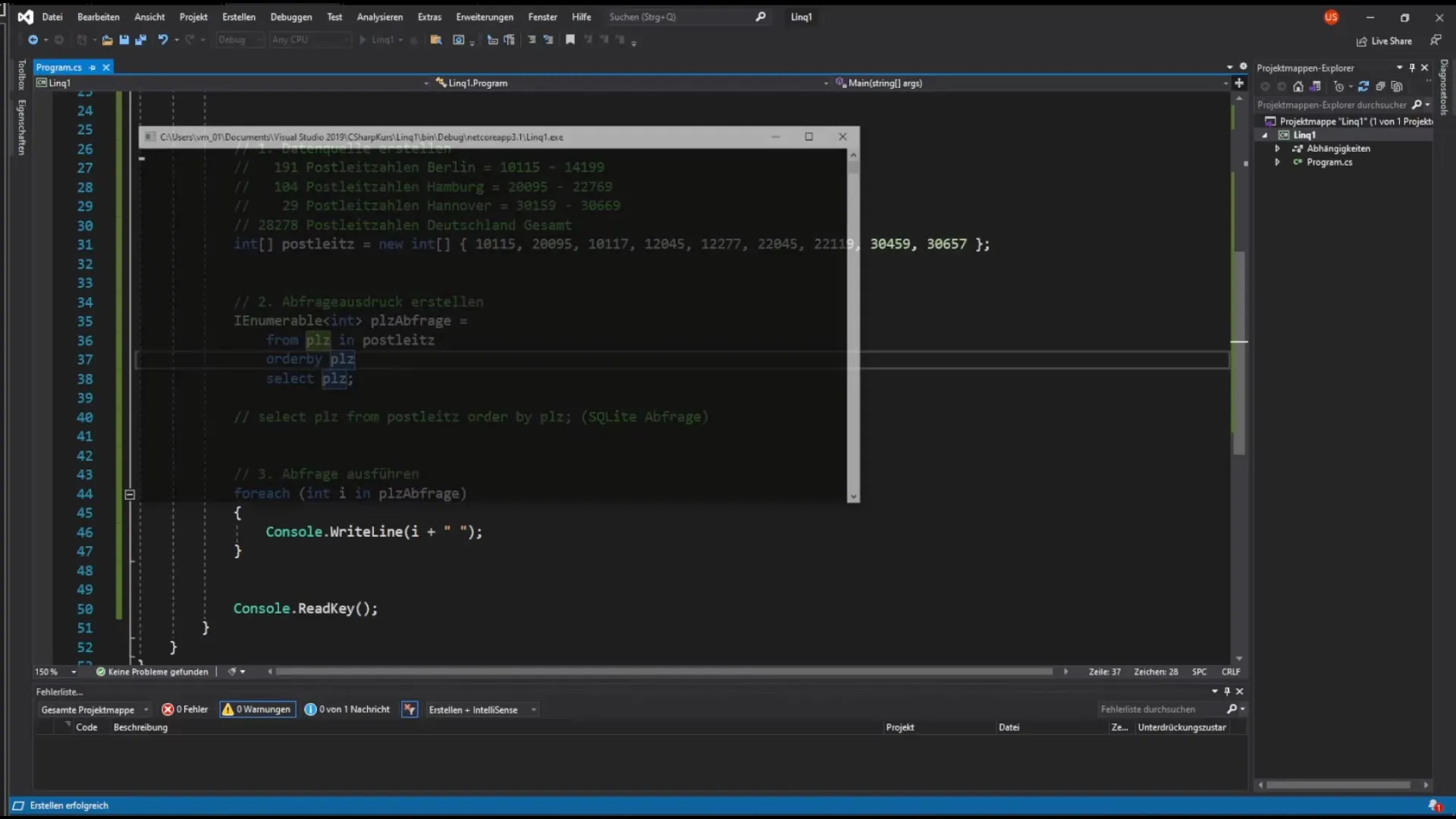If you work with data in C#, you will often encounter the need to filter and sort this data. In this tutorial, you will learn how to use LINQ (Language Integrated Query) to efficiently process your data. We will particularly focus on how to transform an unsorted list into a sorted output and apply filter conditions to extract specific data.
Key insights
- LINQ simplifies filtering and sorting of data.
- The use of OrderBy and Where is central to data processing.
- LINQ expressions can help you retrieve data from different sources like arrays or databases.
Step-by-Step Guide
Step 1: Understanding Unspecified Data
First, you have an array of postal codes that is output unsorted. It is important to recognize that sorting plays a central role in LINQ. In its initial state, the program outputs the data in its original order, which is not always desirable. Here is the first overview of how the data is presented.

Step 2: Generating Sorted Result
To obtain a sorted list on the console, you need the OrderBy command of LINQ. In SQL snippets, we saw that the ORDER BY command has a crucial function in sorting the data by specific criteria. Therefore, you can directly use OrderBy in your LINQ query, followed by the specific property, in this case, the postal code.
Step 3: Implementing Descending Sort
By default, the sorting is ascending. However, if you require a descending order, simply add the hint "descending." To ensure you achieve the desired order, program IntelliSense or auto-completions can help you select the right command.

Step 4: Applying Filter for Specific Data
Now you want to filter only the postal codes of a specific city, for example, Hanover. In SQL, we learned that the WHERE command is used to select records that meet certain criteria. In LINQ, this works similarly with the Where method, where you can specify conditions to display only relevant data.
Step 5: Applying a Filter for Hamburg
A practical example would be to filter all postal codes for the city of Hamburg. Remember to adhere to the correct conditions. In your LINQ command, you can apply similar filters as in SQL, keeping the code straightforward and understandable.
Step 6: Performance and Efficiency of LINQ
When handling large amounts of data, LINQ offers an effective way to search and sort this data. By using LINQ, you can query data faster and more accessibly than with conventional loops. This means you can obtain the relevant data much quicker without having to iterate through the entire set.
Step 7: Implementing Tasks to Ensure Understanding
To deepen your understanding, try independently to output all postal codes for another city, such as Berlin. This allows you to apply the concepts you've learned directly and test what you've learned so far.
Summary - C# with LINQ: Filtering and Sorting Data
In this tutorial, you learned how to use LINQ in C# to filter and sort data. The use of OrderBy and Where provides you with a powerful way to quickly and effectively extract and display desired records from large datasets. Use these skills to make your programming projects more efficient and targeted.
Frequently Asked Questions
How can I use LINQ in my C# project?LINQ can be easily used in a C# project by adding the appropriate using directives for LINQ.
What is the difference between OrderBy and Where?OrderBy sorts the data, while Where filters it to show only the relevant results.
Can I use LINQ in a large database?Yes, LINQ is excellent for large databases as it allows you to perform targeted queries without having to iterate through all the data.


